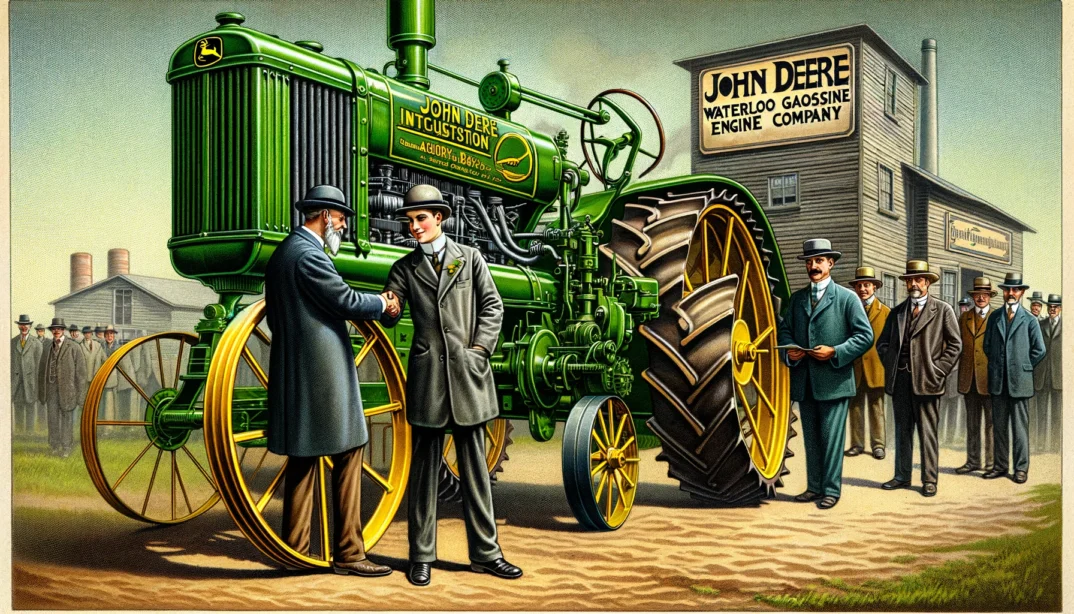John Deere’s Tractor Production History
John Deere, a well-known manufacturer of agricultural machinery, has been producing tractors for many years. Here is a timeline of key periods in John Deere’s tractor production history:
1. 1918: John Deere Enters the Tractor Business
In 1918, John Deere made a strategic move into the tractor business by acquiring the Waterloo Gasoline Engine Company. This acquisition marked John Deere’s transition from primarily producing plows and other farm equipment to becoming a key player in the tractor industry. The Waterloo Boy tractors, which were already popular at the time, became the foundation for John Deere’s future tractor lines. The Waterloo Boy Model N, featuring a two-cylinder engine, was known for its durability and power, making it a favorite among farmers. This acquisition laid the groundwork for John Deere’s century-long legacy in the tractor business, allowing the company to leverage its reputation for quality and innovation in a new product category.
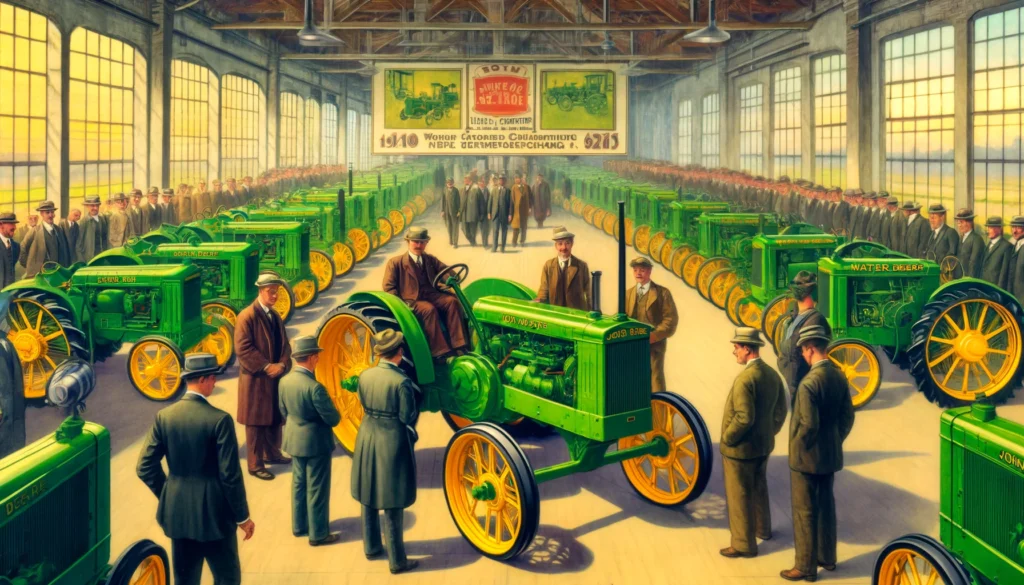
2. 1923: Introduction of the John Deere Model D
The John Deere Model D was introduced in 1923 and quickly became a game-changer in the agricultural industry. This tractor was the first to be entirely designed and manufactured by John Deere, symbolizing the company’s commitment to innovation. The Model D featured a two-cylinder kerosene engine and a distinctive styling with its green and yellow paint, which became synonymous with the John Deere brand. It was renowned for its reliability, ease of use, and ability to handle a variety of farm tasks. The Model D remained in production until 1953, making it one of the longest-running tractor models in history. Its success solidified John Deere’s position as a leading tractor manufacturer and set the stage for future innovations.

3. 1934-1953: Production of the John Deere A and B Models
The John Deere A and B models, produced from 1934 to 1953, were among the company’s most popular and influential tractors. The Model A, introduced in 1934, was designed for larger farms and offered several innovations, including adjustable wheel treads and a more powerful engine. The Model B, introduced shortly after in 1935, was aimed at smaller farms and provided a more affordable option without compromising on quality. Both models were known for their versatility and became staples on American farms. They featured the two-cylinder “Johnny Popper” engine, which was not only efficient but also had a distinctive sound that became iconic. The widespread adoption of these models helped John Deere expand its market reach and deepen its customer loyalty.

4. 1947: Introduction of the First John Deere Diesel Tractor, the Model R
In 1947, John Deere introduced its first diesel tractor, the Model R, marking a significant technological advancement. The Model R was a groundbreaking tractor for its time, featuring a robust diesel engine that provided greater fuel efficiency and power compared to its gasoline predecessors. It also introduced an innovative feature: a starting engine that was used to preheat the diesel engine, ensuring reliable starts in cold weather. This tractor was built with a focus on heavy-duty performance, making it ideal for larger farming operations and more demanding tasks. The Model R set a new standard for durability and efficiency in the tractor industry and demonstrated John Deere’s commitment to adopting new technologies to meet the evolving needs of farmers.
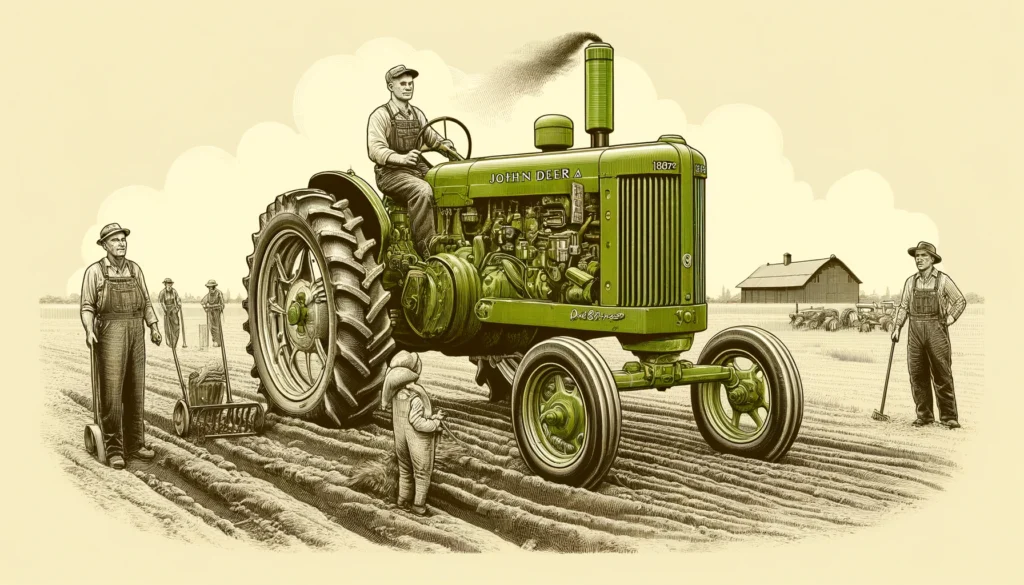
5. 1956: Introduction of the “20 Series” Tractors
The introduction of the “20 Series” tractors in 1956 represented another leap forward in John Deere’s tractor development. This series included models such as the 420, 520, 620, and 720, each designed to cater to different farming needs and sizes. These tractors featured more powerful engines, improved hydraulics, and enhanced operator comfort. They also introduced the Power Steering option, which made maneuvering the tractors much easier and reduced operator fatigue. The 20 Series tractors were known for their versatility, reliability, and innovative features that significantly improved farming efficiency. The success of this series further established John Deere as a leader in the agricultural equipment industry and showcased the company’s ability to continuously innovate.
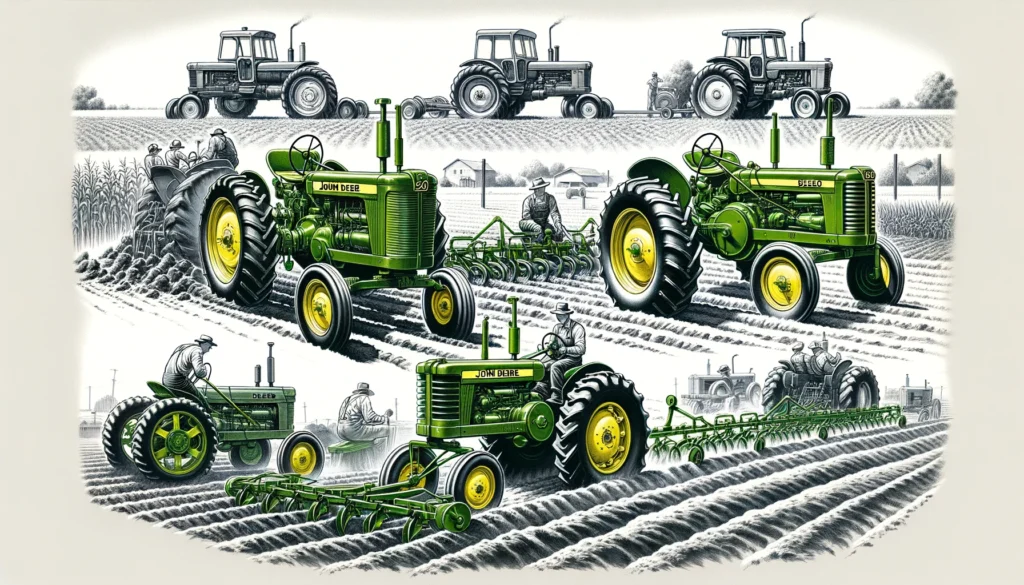
6. 1960: Launch of the “New Generation of Power” Tractors
In 1960, John Deere launched the “New Generation of Power” tractors, a revolutionary line that included the 3010 and 4010 models. This new generation was characterized by several significant improvements over previous models. These tractors featured four- and six-cylinder engines that offered more power and efficiency. They also introduced the concept of synchronized transmission, allowing for smoother and more efficient shifting of gears. Another innovation was the incorporation of a fully enclosed operator station, which provided better protection from the elements and improved comfort. The “New Generation” tractors were designed with a modern aesthetic and offered advanced features that set new standards in the industry. Their introduction marked a major milestone in John Deere’s history and had a lasting impact on tractor design and functionality.
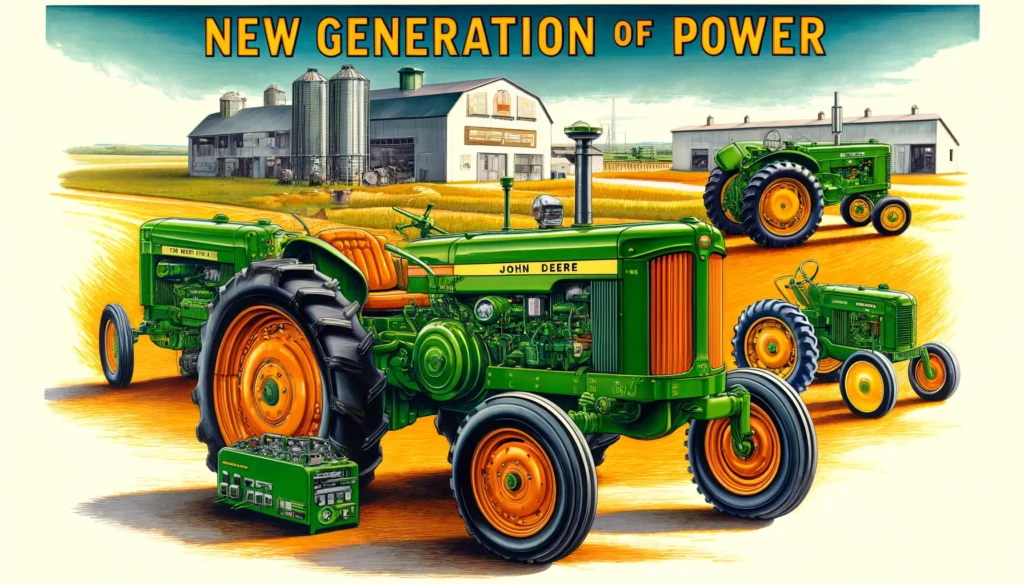
7. 1970s: Introduction of the “Generation II” Tractors
The 1970s saw the introduction of the “Generation II” tractors, including models such as the 4030, 4230, 4430, and 4630. These tractors represented a significant upgrade in terms of power, comfort, and technology. One of the standout features was the Sound-Gard cab, which provided an unprecedented level of operator comfort with its noise reduction, better visibility, and climate control. The “Generation II” tractors also featured improved hydraulics, more powerful engines, and advanced transmission options, making them highly efficient and versatile. These innovations not only enhanced productivity but also set new benchmarks for operator ergonomics and convenience. The “Generation II” series reinforced John Deere’s reputation for producing high-quality, reliable, and technologically advanced tractors.
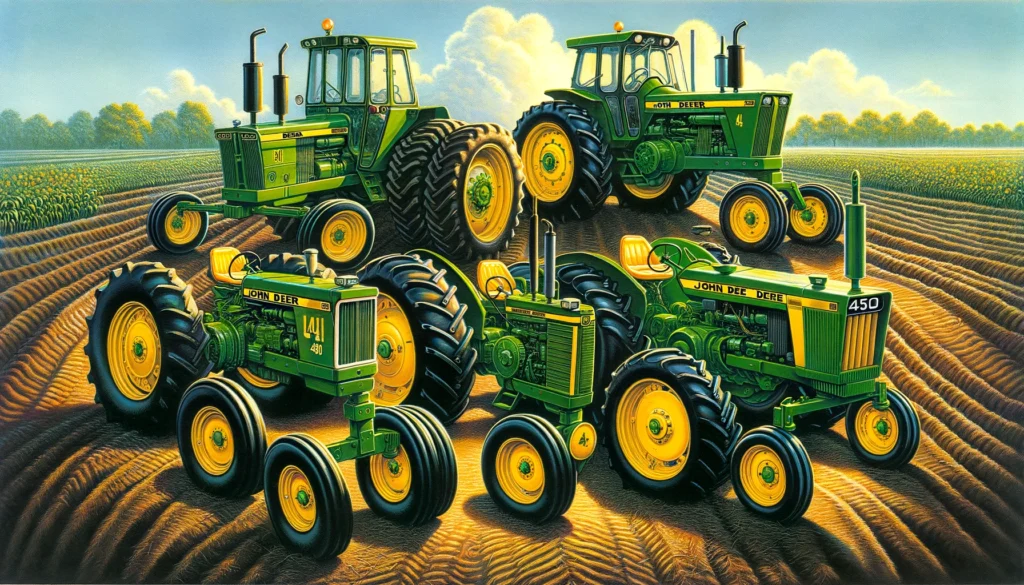
8. 1980s: Introduction of the “50 Series” and Later the “55 Series” Tractors
In the 1980s, John Deere continued its tradition of innovation with the introduction of the “50 Series” tractors, including the 4050, 4250, 4450, and 4650 models. These tractors were designed to meet the growing demands of modern agriculture, offering more powerful engines, enhanced fuel efficiency, and improved operator comfort. They featured the PowerShift transmission, which allowed for seamless gear changes without clutching, significantly improving ease of operation. The “50 Series” also introduced more advanced hydraulic systems and increased lift capacities, making them suitable for a wide range of agricultural tasks. Later in the decade, the “55 Series” was introduced, building on the success of the “50 Series” with further enhancements in power, technology, and comfort. These tractors helped John Deere maintain its competitive edge and continue to meet the evolving needs of farmers.
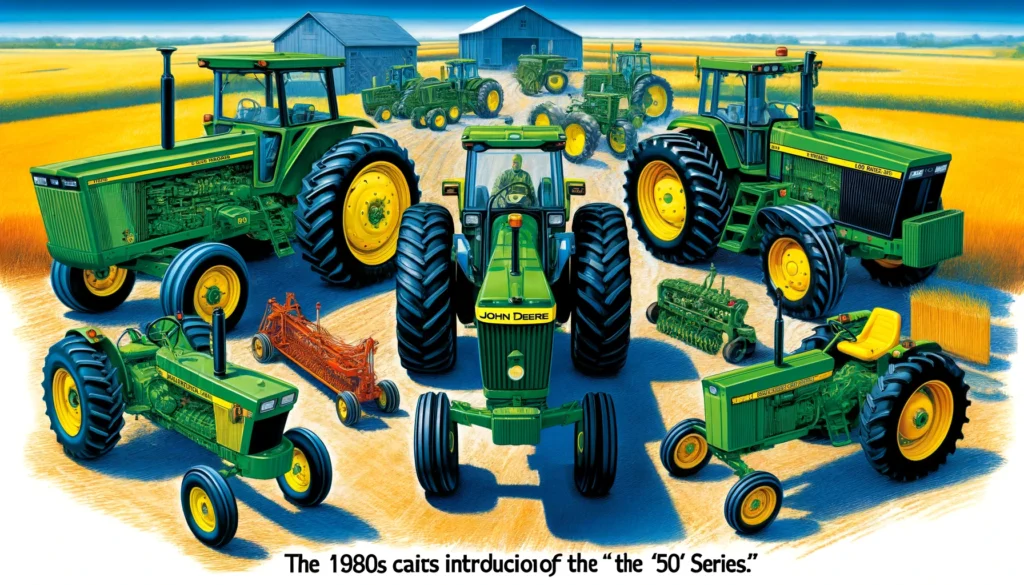
9. 1990s: Launch of the “60 Series” and Later the “70 Series” Tractors
The 1990s saw the launch of the “60 Series” tractors, including models like the 7600 and 7700. These tractors featured significant technological advancements, including improved electronic systems for better engine and transmission management. They also offered enhanced comfort with advanced cab designs and improved ergonomics. The “60 Series” tractors were known for their reliability and versatility, capable of handling a wide range of farming operations. Later in the decade, John Deere introduced the “70 Series,” which continued to build on the innovations of the “60 Series” with further improvements in power, efficiency, and operator comfort. These tractors featured advanced electronic controls, more powerful engines, and enhanced hydraulics, making them some of the most capable and efficient tractors of their time.

10. 2000s: Introduction of the “20 Series” and “30 Series” Tractors
In the 2000s, John Deere introduced the “20 Series” and later the “30 Series” tractors, including models like the 6420 and 8430. These tractors were designed with a focus on precision agriculture, incorporating advanced technologies such as GPS and telematics for better field management and efficiency. They also featured more powerful and fuel-efficient engines, improved hydraulic systems, and enhanced operator comfort with advanced cab designs. The “20 Series” and “30 Series” tractors were known for their versatility and ability to handle a wide range of agricultural tasks, from planting and harvesting to heavy-duty fieldwork. These tractors demonstrated John Deere’s commitment to innovation and its ability to integrate new technologies to meet the evolving needs of modern agriculture.
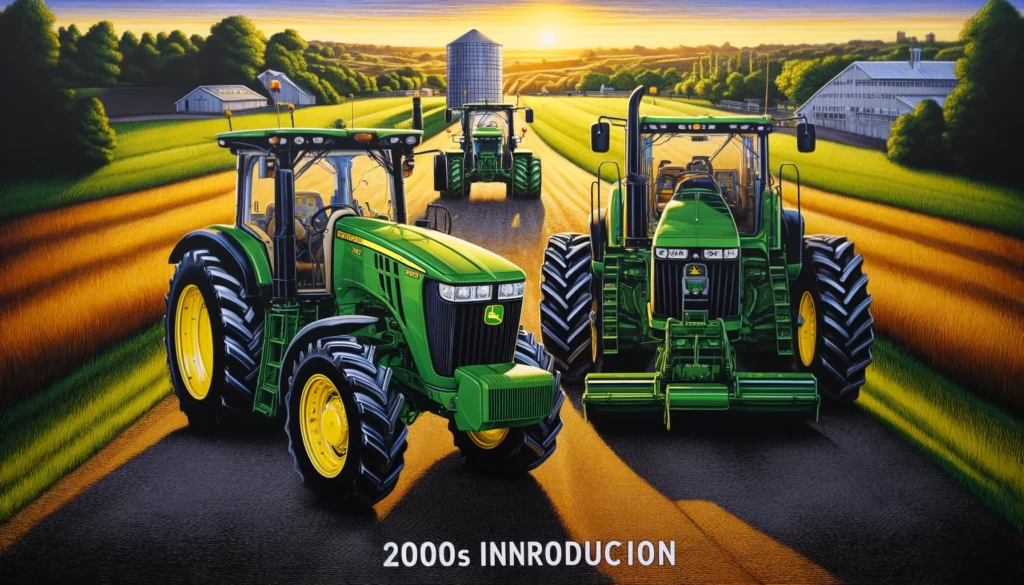
11. 2010s: Introduction of the “R Series” Tractors
The 2010s saw the introduction of the “R Series” tractors, including models like the 7R, 8R, and 9R series. These tractors represented the pinnacle of John Deere’s engineering and technological advancements. They featured powerful and efficient engines, advanced transmission options, and state-of-the-art electronic controls for precision farming. The “R Series” tractors also offered unmatched operator comfort with premium cabs, advanced climate control, and ergonomic designs. These tractors were equipped with the latest in telematics and connectivity, allowing for real-time monitoring and management of farming operations. The “R Series” tractors set new standards for performance, efficiency, and technology in the agricultural industry, cementing John Deere’s position as a leader in tractor manufacturing.
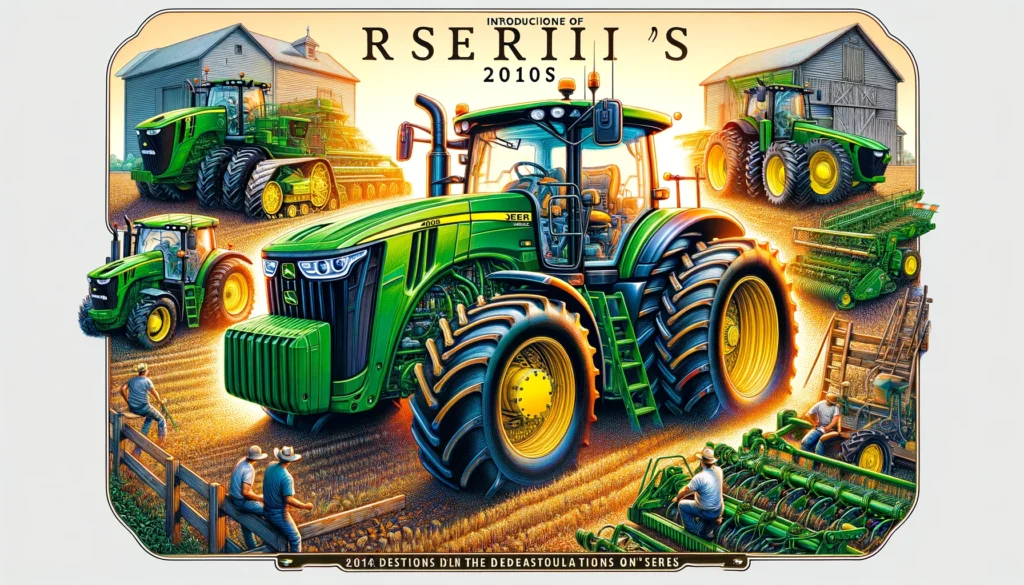
12. 2020s: Continued Production and Advancement of the “R Series” Tractors
In the 2020s, John Deere continued to produce and advance the “R Series” tractors, focusing on integrating the latest technologies to enhance productivity and sustainability. These tractors featured even more powerful and efficient engines, advanced precision agriculture tools, and connectivity solutions that allowed farmers to manage their operations with unprecedented accuracy and efficiency. The company also introduced new models and updates to existing ones, incorporating innovations such as autonomous driving capabilities, advanced telematics, and enhanced operator comfort features. The continued evolution of the “R Series” tractors demonstrated John Deere’s commitment to meeting the challenges of modern agriculture and supporting farmers with the most advanced and reliable equipment available.
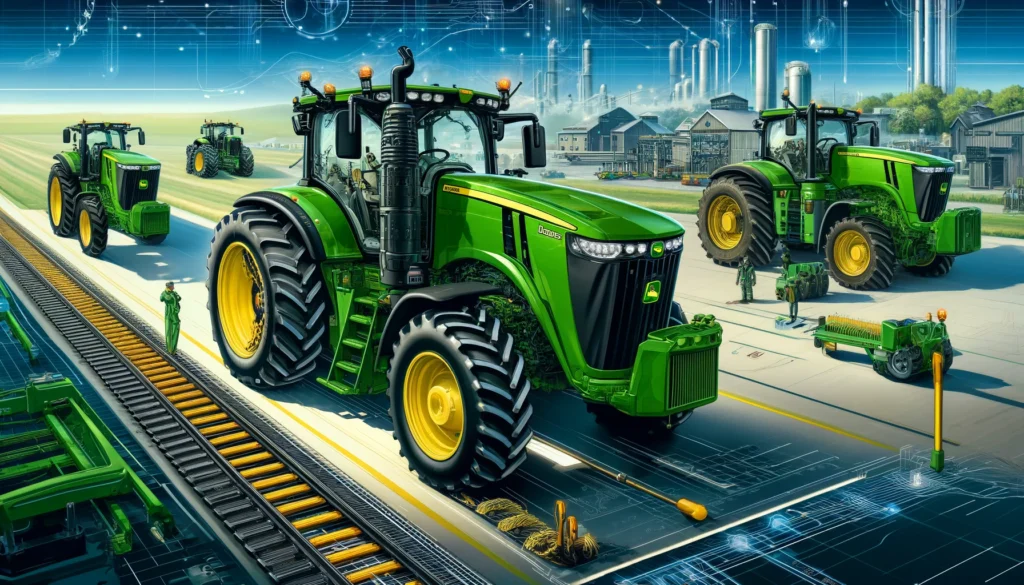
John Deere has consistently produced tractors from 1918 to the present day, with numerous innovations and new models introduced throughout the decades.
